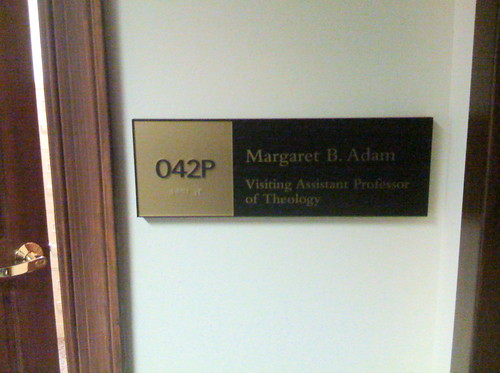I’ve been putting off the canonical obligation for a blogger to write retrospectively about the year past, partly because my family and I felt the weight of a particularly bleak year (in several regards), and I don’t want to bellyache. I’m heartened by the prospect of an Obama administration, but I don’t expect much of any political figure. So the past year as a whole didn’t leave a great taste in my mouth.
Instead of reviewing the year, I can identify my favorite records of the year. That’s easier, although it involves challenges of its own. As each year passes, the accumulated delights of the world of music grows greater, which means I’m decreasingly ardent about listening to brand new releases. I’ve accumulated plenty of recordings from 2008 (thank you, eMusic and Amazon), but I haven’t listened to most of them often enough to identify favorites.
Among the albums that have caught my attention, two in particular stand out: Welcome to the Welcome Wagon, about which I’ve blogged before, and the Wood Brothers’ Loaded. Loaded arrive from out of left field, as Ways Not To Lose did, but I appreciate the direction that the Wood Brothers have taken their songs and arrangements. I love “Postcards From Hell,” and the cover versions of “Angel” and “Buckets of Rain” show that the Wood Brothers’ treatment illuminate old favorites in unexpected ways. On a similar note, I enjoyed the She & Him album (congratulations on your engagement, Zoey!). I was inclined to write this off as a movie star’s overblown sense of her own capacities, but the album works quite well.
The cool kids are all raving about the Fleet Foxes album (on special at Amazon at the moment!), and I have a double reason to like it (since Robin Pecknold is the brother of a former student of mine, a semi-former colleague of Margaret’s, Chad Pecknold). It just didn’t catch my ear, though; if they stick around, I’ll look forward to recognizing my folly at some later date. Among other albums that the critics liked but that I didn’t latch onto, we may count the new David Byrne/Brian Eno album, Bon Iver’s For Emma, Forever Ago, Vampire Weekend, this year’s Death Cab album Narrow Stairs, Coldplay’s Viva La Vida (slipped past me even with the controversy over its relation to Joe Satriani’s “If I Could Fly”), and numerous others. The R.E.M. album disappointed me. Margaret was charmed by Thao Nguyen‘s album, but (again) it didn’t elbow its way into my attention. I like the Kings of Leon’s “Sex on Fire,” but I can’t think of anything else from the new album. The Magnetic Fields, John Legend, the Vivian Girls, Kanye West, the Streets, Amy Ray, the Raconteurs — if their 2008 albums were especially good, I will have to learn that later (which would be fitting, given my long-standing insistence that time-of-release critical judgments frequently don’t hold up, and that we should instead review works that we’ve had some years to assess reflectively).
I enjoyed the spirit of the Flight of the Conchords album (I haven’t seen the TV series), and I’m working my way into Dig, Lazarus, Dig!!. I expect that Nick Cave’s latest will turn out to be a favorite of 2008, and I’m looking forward to hearing Lindsey Buckingham’s Gift of Screws (it hasn’t turned up on eMusic, and I haven’t fired up to download it from Amazon or iTunes yet), and I haven’t spent much time with Frightened Rabbit’s The Midnight Organ Fight, but it made a good first impression. What I’ve noticed from the Hold Steady’s Stay Positive sounded good to me, but it doesn’t stand out from the crowd of their very good music yet.
All told, and despite my harder-rocking tendencies, the albums that won my attention this year were by Welcome Wagon and the Wood Brothers.
Oh, and we liked the harrowing Dark Knight and the new Bond movie, Quantum of Solace. I don’t remember if we’ve even seen any other 2008 movie releases.
(I know, not all the links are correct — I’ll fix them later)


